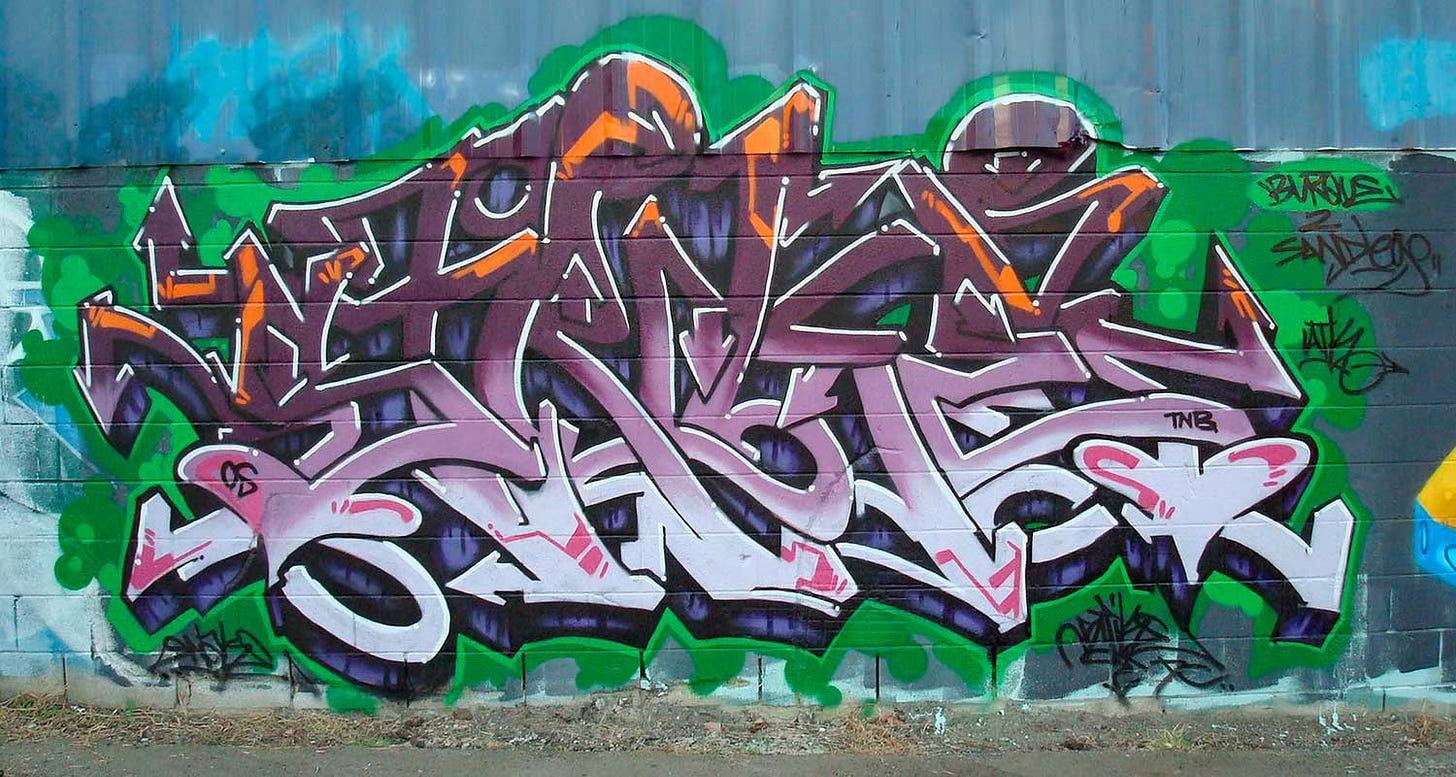
I was nearly expelled from Antioch College in 1975 when I participated in an impromptu graffiti art party to protest the painting over of some incredible wall art that had accumulated over the years on the walls of one dormitory in particular, North Hall. One floor had an imaginative utopian scene of extraterrestrials interacting with earthlings that was epic in scale and obviously the work of many hands over a long period of time. The decision to whitewash the walls felt like an erasure of student expression, an act of administrative control that clashed with the college’s free-spirited ethos. Our response was swift and defiant: an explosion of color, messages, and symbols reclaiming the space that had been stripped bare.
At the time, War’s song "The World is a Ghetto" was getting heavy airplay on campus, its lyrics and melody resonating deeply with the countercultural, activist spirit of the era. The song became part of a soundtrack to our resistance, encapsulating both the frustration and the creative energy that fueled the protest.
This was also at the time of a budding graffiti movement in New York City, one that would later blossom into the Wild Style era, as sharp, aerodynamic spray paintings began covering the subways of the city. The paintings were reflective of the brutalism of rapidly moving train cars in close proximity to living human bodies. What started as an underground movement, dismissed by many as vandalism, eventually evolved into a legitimate art form, making its way into the most prestigious galleries and museums. While graffiti never truly disappears, most of that subway art was eventually removed, even as some pieces were preserved by collectors who recognized their cultural and artistic significance.
Currently, in Seattle, we are witnessing what some writers are calling the third wave of graffiti art—the second wave having peaked in the 1990s. This new era continues to push the boundaries of street art, incorporating elements of digital culture, contemporary politics, and social justice movements. As in the past, these works reflect deep social and political commentary, challenging the status quo while providing a visual narrative of our times.
The cycle continues: art emerges, is suppressed, adapts, and reemerges. The impulse to create in public spaces, to speak through color and form, persists despite efforts to control and contain it. My own experience at Antioch College was just one tiny moment in this ongoing dialogue between artists and institutions, between rebellion and recognition.
A current example of this creative cycle is visible in the Keith Haring exhibit at MoPop, which showcases how street art evolved into a recognized and celebrated movement while maintaining its activist roots. Haring’s work, initially seen in subways and public spaces, now commands attention in major museums, reinforcing the enduring impact of graffiti culture. Additionally, the long-running publication World War 3 Illustrated continues to push boundaries with its latest issue, a testament to its commitment to political and social commentary through comics and art since its inception in 1979. Many of the pieces they have published are adapted from street art.
Of course, in my case, my rebellious streak didn’t land me in a museum—just in hot water with the college administration. But if history has shown us anything, it’s that suppressing artistic expression is like painting over graffiti: a temporary fix at best. The need to create, to comment, to defy will always resurface, no matter how many coats of whitewash are applied. And if a little trouble comes with that freedom? Well, at least it makes for a good story.




Jeff, you rebel, you!